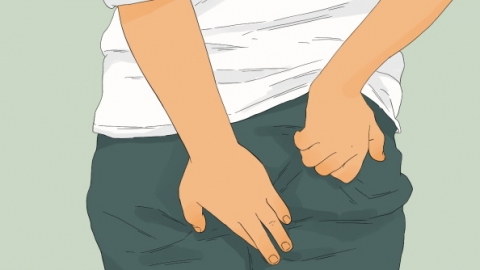How to treat jock itch
Generally, tinea cruris may be caused by environmental factors, decreased immunity, contact with infection sources, eczema, neurodermatitis, and other reasons. It is recommended to seek timely medical consultation, identify the cause, and recover under the guidance of professional doctors through general treatment, medication, or surgical treatment. A detailed analysis is as follows:

1. Environmental Factors
High temperature and humidity provide an ideal environment for fungal growth, promoting fungal proliferation and potentially leading to tinea cruris. Other skin conditions such as dyshidrosis and heat rash may also occur. It is recommended to wear breathable clothing and avoid wearing tight pants or synthetic underwear for prolonged periods.
2. Decreased Immunity
A weakened immune system reduces the body's ability to resist fungi, making it easier for fungi to colonize the skin and cause tinea cruris. Symptoms may also include recurrent infections, fatigue, and slow wound healing. Follow medical advice to use antifungal medications such as terbinafine cream, miconazole nitrate cream, or ciclopirox spray. Additionally, maintain good lifestyle habits to enhance the body's resistance.
3. Contact with Infection Sources
Direct contact with individuals already infected with tinea cruris or sharing personal items may also lead to its transmission. Other fungal infections such as athlete's foot (tinea pedis) or nail fungus (onychomycosis) might also occur. It is recommended to seek medical attention promptly and use antifungal medications such as clotrimazole cream, bifonazole gel, or terbinafine hydrochloride spray for local treatment. Maintain good personal hygiene and avoid sharing personal items with others.
4. Eczema
If the skin in the buttock area remains moist and non-breathable for a long time, eczema may develop, which can lead to tinea cruris due to irritation. Symptoms may also include skin erythema and blisters. Treatment may include medications such as hydrocortisone cream, Shiduqing capsules, and calamine lotion, under a doctor's guidance.
5. Neurodermatitis
Neurodermatitis is a skin condition caused by dysfunction of the nervous system. It may also cause itching in the buttock area, which damages the skin barrier and leads to tinea cruris. Symptoms may also include scratch marks and lichenification of the skin on the feet. Treatment options may include cetirizine tablets, loratadine tablets, triamcinolone acetonide and neomycin plaster, among others.
When treating tinea cruris, choose the appropriate treatment method based on individual conditions. At the same time, maintain healthy lifestyle habits and a positive mindset.








